We Analyzed 70+ Mailscale Reviews To Give You an Unbiased View
If you're running cold outreach at scale, you've probably heard of Mailscale.
It promises easy inbox creation, automated warm-up, and better email deliverability. But does it actually deliver?
We went through 70+ reviews from real users, across G2, Reddit, and communities, to break it all down for you.
In this blog, you’ll find:
- What users love about Mailscale
- The most common complaints (and what to watch out for)
- Real-world use cases and who it’s best for
- A clear verdict: should you use it?
Let’s cut through the hype and get to the truth.
What Is Mailscale & How It Works (With Core Features Explained)
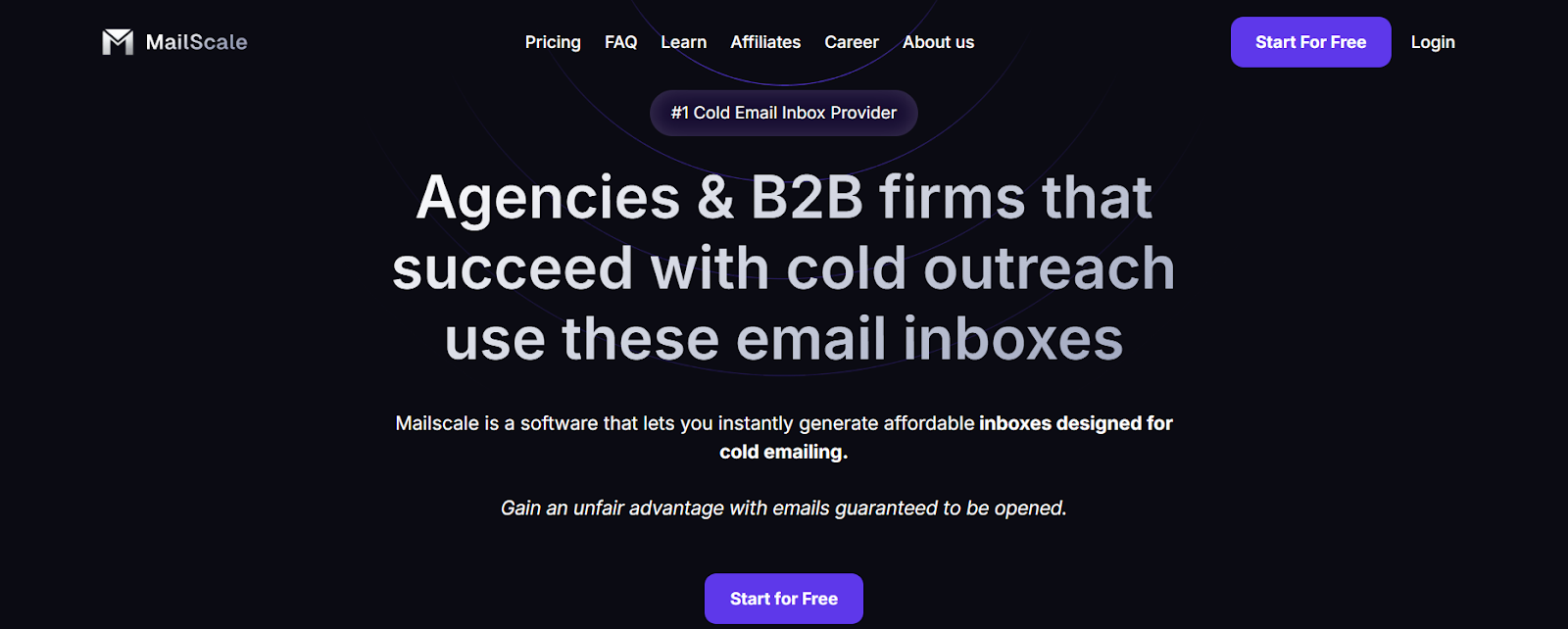
Mailscale is an email infrastructure tool that helps teams send emails at scale while keeping deliverability high and staying out of spam.
Instead of handling everything through a single IP or shared server (like many basic tools), Mailscale gives you more control.
You can warm up domains, rotate sending IPs, and track your domain health, all from one place.
It’s mainly used by people who send a large number of emails, like:
- Cold emailers
- SaaS teams sending onboarding or product emails
- Growth marketers who manage multiple domains
Many teams choose Mailscale over older tools like SendGrid or Mailgun because it gives them more control over their sending setup, especially if they’re technical or working at scale.
⚙️ What You Get with Mailscale
Here’s a table summarizing Mailscale’s main features:
Overall, Mailscale is built for teams who need strong control over how emails are sent.
If you're looking for better deliverability and you're comfortable setting up domains and APIs, it can be a solid choice.
Mailscale Pricing Breakdown
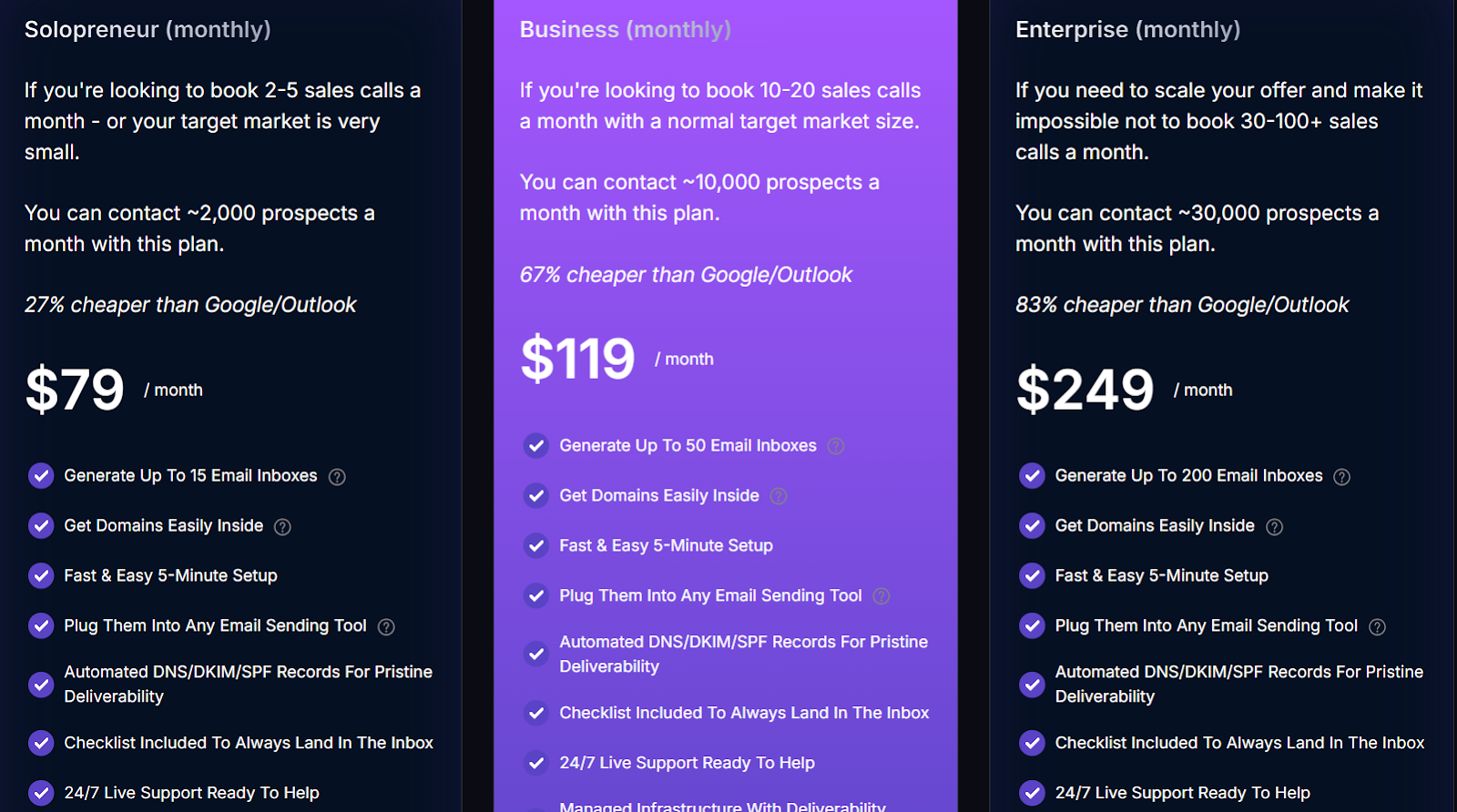
Mailscale offers three main pricing plans based on how many email inboxes and prospects you want to handle:
I. Starter Plan – $79/month
- Includes up to 15 email inboxes
- Suitable for reaching around 2,000 prospects/month
- Good for solo founders or small teams doing cold outreach
II. Business Plan – $119/month
- Supports up to 50 inboxes
- Lets you contact up to 10,000 prospects/month
- Designed for growing teams or agencies managing multiple clients
III. Enterprise Plan – $249/month
- Comes with up to 200 inboxes
- Built for teams reaching up to 30,000 prospects/month
- Ideal for large-scale outreach or operations with multiple domains
A Few Extra Costs to Know
- Domains are required to create inboxes (you buy them through Mailscale). Each domain costs around $9–$13/year. You can make up to 5 inboxes per domain.
- Extra inboxes beyond your plan? They cost $1 per inbox per month.
All plans come with a 7-day free trial, so you can try before committing.
Is Mailscale Worth the Price?
Mailscale gives you solid infrastructure tools, warm-up, sender rotation, and domain health tracking.
But it doesn’t include outreach or sequencing, so you’ll still need tools like Instantly or Smartlead to run campaigns.
That’s why some users prefer Mailforge; it combines both email infrastructure and outreach in one tool, with a simpler setup and better value at similar pricing.
Who Should Use Mailscale (And Who Probably Shouldn’t)
Mailscale works best for users who are comfortable with the technical setup and need more control over how their emails are sent.
If you're looking for an all-in-one email tool with built-in outreach features, this might not be the best fit.
Here’s a clear breakdown:
In short, if you know your way around domains, warm-ups, and deliverability, Mailscale can give you the control you need.
But if you want to avoid setup and just start sending, a simpler, all-in-one tool like Mailforge might save you time and hassle.
✅ Pros and ❌ Cons Of Mailscale: Based on 70+ Real Reviews
After going through reviews across G2, Reddit, and Trustpilot, here’s what people say about using Mailscale, the good and the not-so-good.
✅ Pros of Mailscale
- Quick and Easy Setup: Users appreciate the straightforward process of setting up domains and inboxes, with automated configurations for SPF, DKIM, and DMARC.
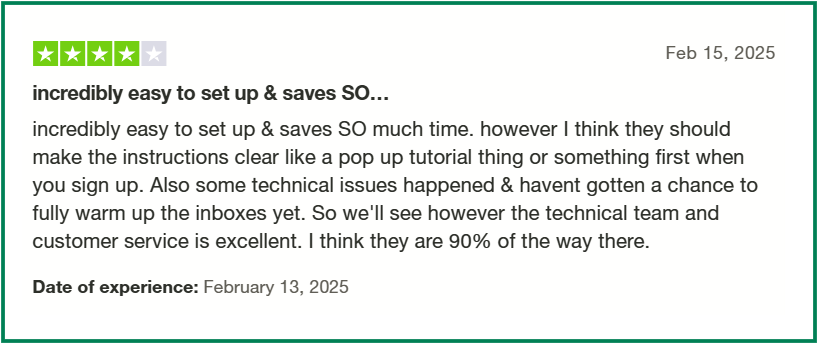
- Cost-Effective for Scaling: Many find Mailscale to be an affordable solution for managing multiple inboxes and domains, especially when compared to traditional providers.
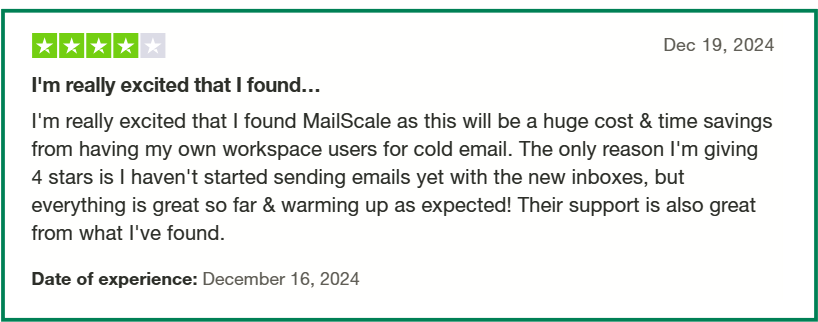
- Responsive Support: The support team is noted for being helpful and responsive, assisting users through setup and troubleshooting processes.
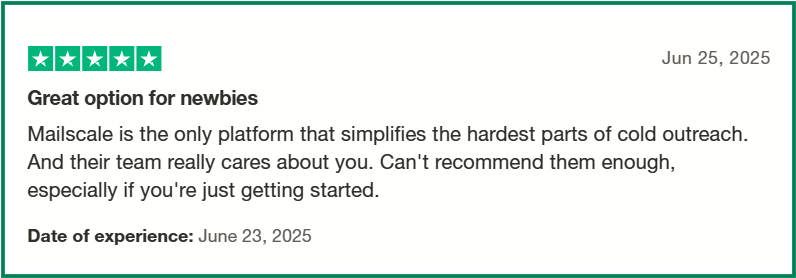
❌ Cons of Mailscale
- Unreliable warm-up experience and poor notifications: One user shared that their inbox warm-up didn’t work for two weeks, with no alerts or warnings from the platform. Even after contacting support, they were asked to recreate emails, which added more delays and frustration.

- UI is harder to use for non-technical users: Compared to simpler tools like Mailforge or Mailgun, users say Mailscale’s dashboard can feel cluttered or too technical, especially if you're not familiar with email infrastructure.
- Some deliverability issues despite setup: One user shared that even with 50 inboxes and 10 domains set up, emails weren’t landing well, and bounce rates were high. This shows that deliverability isn’t always guaranteed, even with proper infrastructure.

- No clear inbox health tracking: Some users mention that Mailscale doesn’t show the ongoing status or health of each email inbox. This makes it harder to know if something is wrong, like if a domain is flagged or emails are underperforming, until it's too late.

In summary, Mailscale is a solid choice for teams seeking a cost-effective and automated solution for email infrastructure.
However, those requiring integrated outreach tools or dedicated IP addresses might need to consider additional platforms or alternatives.
Mailscale vs Mailforge: Quick Comparison
If you're comparing tools for sending cold emails at scale, both Mailscale and Mailforge come up often, but they’re built for different types of users.
Here’s a quick breakdown of how they compare on the features that matter most:
While Mailscale gives you reliable infrastructure, it’s mainly suited for technical users.
Most teams still need to plug in other tools to send, track, and manage campaigns.
That’s where many teams face issues:
- Too complex for small or non-technical teams
- No built-in outreach, needs extra tools
- 3-month pricing lock-ins reduce flexibility
Mailforge, on the other hand, is built to simplify the entire workflow.
It gives you everything, sending, warm-up, outreach, and inbox monitoring, all in one place, with less effort and faster results.
If you're looking for power without the patchwork, Mailforge might be the better choice.
Final Verdict: Is Mailscale Worth It in 2025?
If your team is sending cold emails at scale and you're comfortable with setup and technical tasks, Mailscale can give you solid control over your email delivery.
It’s reliable for warm-up, sending, and infrastructure, but it stops there.
You’ll still need separate tools for outreach, follow-ups, and managing replies.
That means more setup, more cost, and more time spent stitching things together.
Here’s where it fits, and where it falls short:
- ✅ Great for teams who want full control over domains, inboxes, and delivery
- ❌ Not ideal for teams looking for an all-in-one email solution
- ❌ Requires extra tools for outreach, which adds to the complexity
- ❌ Setup and workflow can slow you down if you’re not technical
If you want similar performance without the extra steps, Mailforge is a strong alternative.
It brings sending, warm-up, outreach, and tracking together, so you can focus on results, not setup.
👉 Try Mailforge, get everything in one place and start faster →